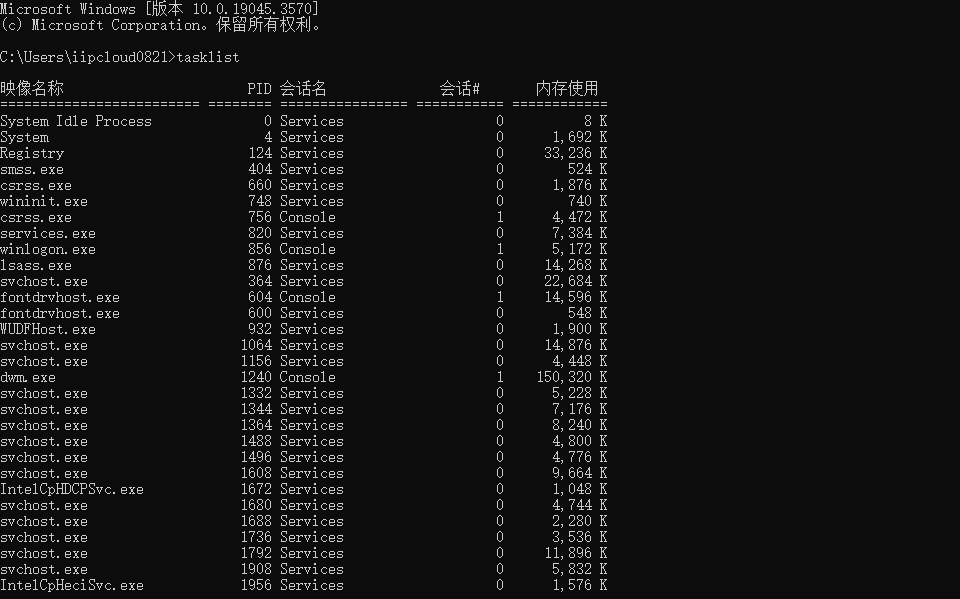并发编程:Java线程

并发编程:Java线程
SerMs创建和运行线程
1 | // 创建线程对象 |
例如:
1 | // 构造方法的参数是给线程指定名字,推荐 |
使用 Runnable 配合 Thread
Runnablen: 可以看作是一个需要执行的任务本体
把【线程】和【任务】(要执行的代码)分开
- Thread 代表线程
- Runnable 可运行的任务(线程要执行的代码)
1 | Runnable runnable = new Runnable() { |
例如:
1 | // 创建任务对象 |
Java 8 以后可以使用 lambda 精简代码
1 | // 创建任务对象 |
Thread 与 Runnable 的关系
Thread 类是Java提供的表示一个线程的类,它继承自 java.lang.Thread。通过创建 Thread 类的实例,可以表示一个独立的线程,可以在该线程中执行一段代码。
Runnable 接口是Java提供的表示可执行任务的接口,它定义了run()方法。通过实现 Runnable 接口,可以将一段代码封装成一个任务,并交给 Thread 进行执行。
Thread 类和 Runnable 接口之间的关系是,Thread 类可以通过构造函数接受一个实现了 Runnable 接口的对象作为参数,从而将实现了 Runnable 接口的任务指派给该线程进行执行。具体地,Thread 类提供了一个构造函数 Thread(Runnable target),用于接收一个 Runnable 对象,并把它设置为该线程的任务。
使用 Runnable 接口有以下几个优势:
- 更好地面向对象:通过实现
Runnable接口,任务代码与线程对象本身进行解耦,使得代码更加清晰、简洁和可维护。 - 继承的灵活性:Java中的类是单继承的,如果一个类已经继承了其他类,就不能再继承
Thread类。而通过实现Runnable接口,可以避免这种限制,使得任务代码可以与其他类进行更好的组合。 - 资源共享:多个线程可以共享同一个
Runnable对象,实现资源共享。 - 线程池支持:使用
Runnable接口可以更方便地将任务提交给线程池进行管理和调度。
下面是一个示例代码,演示了使用 Runnable 接口创建线程:
1 | public class RunnableDemo implements Runnable { |
在上面的代码中,RunnableDemo 类实现了 Runnable 接口,并实现了 run() 方法作为任务的代码逻辑。然后,创建一个 Thread 实例,将 runnable 对象传入 Thread 的构造函数中,最后调用 start() 方法启动线程。
通过使用 Runnable 接口,可以更好地将任务和线程进行分离,提高代码的可读性和可维护性。
FutureTask 配合 Thread
FutureTask能够接收 Callable类型的参数,用来处理有返回结果的情况
1 | // 创建任务对象 |
查看进程线程的方法
windows
任务管理器可以查看进程和线程数,也可以用来杀死进
tasklist查看进程
taskkill杀死进程
linux
ps -fe查看所有进程ps -fT -p查看某个进程(PID)的所有线程kill杀死进程top按大写 H 切换是否显示线程top -H -p查看某个进程(PID)的所有线程
Java
- jps 命令查看所有 Java 进程
jstack查看某个 Java 进程(PID)的所有线程状态jconsole来查看某个 Java 进程中线程的运行情况(图形界面)
jconsole 远程监控配置
- 需要以如下方式运行你的 java 类
1 | java -Djava.rmi.server.hostname=`ip地址` -Dcom.sun.management.jmxremote - |
- 修改 /etc/hosts 文件将 127.0.0.1 映射至主机名
如果要认证访问,还需要做如下步骤
- 复制 jmxremote.password 文件
- 修改 jmxremote.password 和 jmxremote.access 文件的权限为 600 即文件所有者可读写
- 连接时填入 controlRole(用户名),R&D(密码)
理论
栈与栈帧
Java Virtual Machine Stacks (Java 虚拟机栈)
我们都知道 JVM 中由堆、栈、方法区所组成,其中栈内存是给线程用的,每个线程启动后,虚拟机就会为其分配一块栈内存
- 每个栈由多个栈帧(Frame)组成,对应着每次方法调用时所占用的内存
- 每个线程只能有一个活动栈帧,对应着当前正在执行的那个方法
线程上下文切换(Thread Context Switch)
因为以下一些原因导致 cpu 不再执行当前的线程,转而执行另一个线程的代码
- 线程的 cpu 时间片用完
- 垃圾回收
- 有更高优先级的线程需要运行
- 线程自己调用了 sleep、yield、wait、join、park、synchronized、lock 等方法
当 Context Switch 发生时,需要由操作系统保存当前线程的状态,并恢复另一个线程的状态,Java 中对应的概念 就是程序计数器(Program Counter Register),它的作用是记住下一条 jvm 指令的执行地址,是线程私有的
- 状态包括程序计数器、虚拟机栈中每个栈帧的信息,如局部变量、操作数栈、返回地址等
- Context Switch 频繁发生会影响性能
常见方法
| 方法名 | static | 功能说明 | 注意 |
|---|---|---|---|
| start() | 启动一个新线程,在新的线程运行 run 方法中的代码 | start 方法只是让线程进入就绪,里面代码不一定立刻运行(CPU 的时间片还没分给它)。每个线程对象的start方法只能调用一次,如果调用了多次会出现IllegalThreadStateException | |
| run() | 新线程启动后会调用的方法 | 如果在构造 Thread 对象时传递了 Runnable 参数,则线程启动后会调用 Runnable 中的 run 方法,否则默认不执行任何操作。但可以创建 Thread 的子类对象, 来覆盖默认行为 | |
| join() | 等待线程运行结束 | ||
| join(long n) | 等待线程运行结束,最多等待 n 毫秒 | ||
| getId() | 获取线程长整型的 id | id 唯一 | |
| getName() | 获取线程名 | ||
| setName(String) | 修改线程名 | ||
| getPriority() | 获取线程优先级 | ||
| setPriority(int) | 修改线程优先级 | java中规定线程优先级是1~10 的整数,较大的优先级能提高该线程被 CPU 调度的机率 | |
| getState() | 获取线程状态 | Java 中线程状态是用 6 个 enum 表示,分别为: NEW, RUNNABLE, BLOCKED, WAITING, TIMED_WAITING, TERMINATED | |
| isInterrupted() | 判断是否被打断, | 不会清除 打断标记 | |
| isAlive() | 线程是否存活 (还没有运行完毕) | ||
| interrupt() | 打断线程 | 如果被打断线程正在 sleep,wait,join 会导致被打断的线程抛出 InterruptedException,并清除 打断标 记 ;如果打断的正在运行的线程,则会设置 打断标记 ;park 的线程被打断,也会设置 打断标记 | |
| interrupted() | static | 判断当前线程是否被打断 | 会清除 打断标记 |
| currentThread() | static | 获取当前正在执行的线程 | |
| sleep(long n) | static | 让当前执行的线程休眠n毫秒, 休眠时让出 cpu 的时间片给其它线程 | |
| yield() | static | 提示线程调度器让出当前线程对CPU的使用 | 主要是为了测试和调试 |
start 与 run
调用 run
1 | public static void main(String[] args) { |
输出
1 | 19:39:14 [main] c.TestStart - main |
程序仍在 main 线程运行, FileReader.read() 方法调用还是同步的,也就是说并没有额外开辟线程去执行run里面的业务
调用 start
将上述代码的 t1.run() 改为
1 | t1.start(); |
输出
1 | 19:41:30 [main] c.TestStart - do other things ... |
程序在 t1 线程运行, FileReader.read() 方法调用是异步的
总结
- 直接调用 run 是在主线程中执行了 run,没有启动新的线程
- 使用 start 是启动新的线程,通过新的线程间接执行 run 中的代码
sleep 与 yield
sleep
调用 sleep 会让当前线程从 Running 进入 Timed Waiting 状态(阻塞)
其它线程可以使用 interrupt 方法打断正在睡眠的线程,这时 sleep 方法会抛出
睡眠结束后的线程未必会立刻得到执行
建议用 TimeUnit 的 sleep 代替 Thread 的 sleep 来获得更好的可读性
yield
调用 yield 会让当前线程从 Running 进入 Runnable 就绪状态,然后调度执行其它线程
具体的实现依赖于操作系统的任务调度器
建议用 TimeUnit 的 sleep 代替 Thread 的 sleep 来获得更好的可读性
线程优先级
线程优先级会提示(hint)调度器优先调度该线程,但它仅仅是一个提示,调度器可以忽略它
如果 cpu 比较忙,那么优先级高的线程会获得更多的时间片,但 cpu 闲时,优先级几乎没作用
1
2
3
4
5
6
7
8
9
10
11
12
13
14
15
16
17
18
19Runnable task1 = () -> {
int count = 0;
for (;;) {
System.out.println("---->1 " + count++);
}
};
Runnable task2 = () -> {
int count = 0;
for (;;) {
// Thread.yield();
System.out.println(" ---->2 " + count++);
}
};
Thread t1 = new Thread(task1, "t1");
Thread t2 = new Thread(task2, "t2");
// t1.setPriority(Thread.MIN_PRIORITY);
// t2.setPriority(Thread.MAX_PRIORITY);
t1.start();
t2.start();
join 方法
下面的代码执行,打印 r 是什么?
1 | static int r = 0; |
分析
- 因为主线程和线程 t1 是并行执行的,t1 线程需要 1 秒之后才能算出 r=10
- 而主线程一开始就要打印 r 的结果,所以只能打印出 r=0
解决方法
- 用 join,加在 t1.start() 之后即可
有时效的 join
1 | static int r1 = 0; |
等待1.5s
sleep 和 join区别
- 功能不同:
sleep()方法是让线程进入休眠状态,暂停当前线程的执行一段时间后再继续执行;而join()方法则是用于等待一个线程的终止,当前线程会等待被调用线程的执行完成后再继续执行。 - 使用方式不同:
sleep()方法是Thread类的成员方法,可以通过Thread.sleep()来调用;而join()方法也是Thread类的成员方法,需要通过调用其他线程的join()方法来等待该线程的执行完成。 - 等待的对象不同:
sleep()方法是当前线程调用自身的sleep()方法,使得该线程进入休眠;而join()方法是当前线程调用其他线程的join()方法,使得当前线程等待其他线程的执行完成。 - 异常处理不同:
sleep()方法需要处理InterruptedException异常,该异常在其他线程中调用当前线程的interrupt()方法时会抛出;而join()方法则不需要处理异常。
interrupt 方法详
打断 sleep,wait,join 的线程
这几个方法都会让线程进入阻塞状态 打断 sleep 的线程, 会清空打断状态,以 sleep 为例
1 | private static void test1() throws InterruptedException { |
输出
1 | java.lang.InterruptedException: sleep interrupted |
打断正常运行的线程
打断正常运行的线程, 不会清空打断状态
1 | private static void test2() throws InterruptedException { |
输出
1 | 20:57:37.964 [t2] c.TestInterrupt - 打断状态: true |
打断 park 线程
打断 park 线程, 不会清空打断状态
1 | private static void test3() throws InterruptedException { |
输出
1 | 21:11:52.795 [t1] c.TestInterrupt - park... |
如果打断标记已经是 true, 则 park 会失效
1 | private static void test4() { |
输出
1 |
|
可以使用 Thread.interrupted() 清除打断状态











